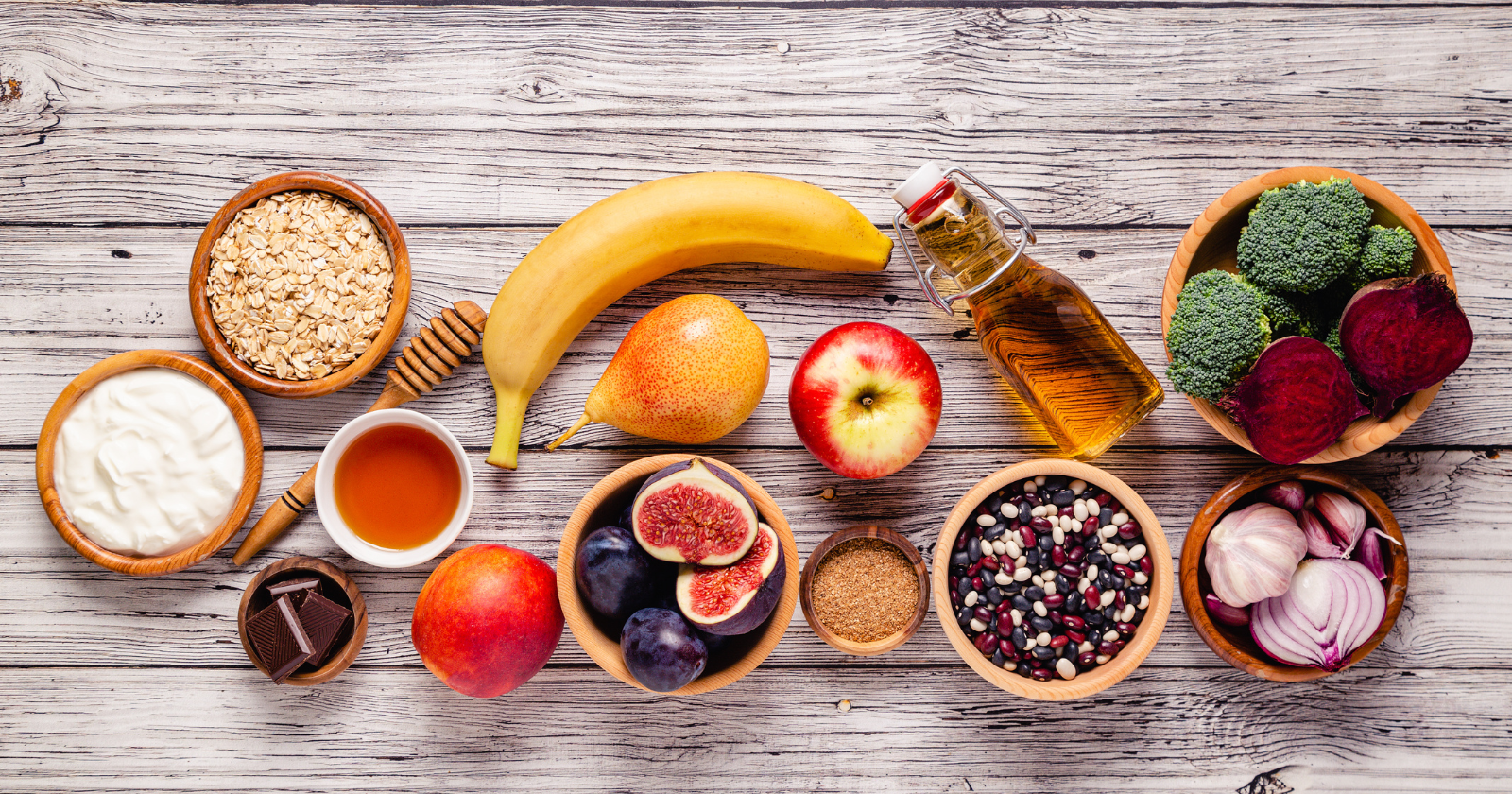10 vegetarian products nutritionists say are secretly good for your gut
Here’s a little confession from my kitchen: I used to think “gut health” was just kombucha bottles and pricey supplements.
Then I started paying attention to the basics—what I cook with every day—and realized how many quiet heroes were already sitting in my pantry and fridge.
If you’re a curious plant-based eater like me, you don’t need a biology degree to take care of your microbiome. You need fiber, a few friendly microbes, and the know‑how to use them.
Think of your gut like a garden. You feed it, water it, and avoid trampling the seedlings.
The fun part?
Many of the best “fertilizers” are everyday vegetarian products you might already love.
Below are 10 staples nutrition pros often recommend. I’ll share why they work and how I fold them into real life.
1. Tempeh
Tempeh is fermented soybeans pressed into a firm cake. It’s nutty, hearty, and wildly versatile.
Because it’s fermented, it often contains living cultures before you cook it. Even when those don’t survive a hot pan, the fermentation process pre-digests some of the carbs and proteins, making tempeh easier on many stomachs.
It’s also a fiber-and-protein combo, which is great for feeding microbes and keeping you full. I love it marinated in soy sauce, maple, and garlic, then seared until caramelized.
Toss into stir-fries, grain bowls, or tacos. If you’re new to tempeh, steam it for 10 minutes first—it softens any bitterness and makes the texture extra pleasant.
2. Miso
Miso is a fermented soybean paste packed with savory umami. A spoonful transforms broths, dressings, and glazes.
Because it’s a living food, you get more benefit if you avoid boiling it. Personally, I whisk miso into soup right at the end, off the heat.
What makes miso helpful? Fermentation breaks things down, and miso brings enzymes and microbial metabolites that many guts appreciate. It’s not just for miso soup, either.
I stir a teaspoon into tahini with lemon and water for the creamiest salad dressing. It’s the kind of flavor that makes vegetables taste like a treat, which—let’s be honest—helps you eat more of them. More plants, happier microbes.
3. Sauerkraut and vegetarian kimchi
Crunchy, tangy, and teeming with friendly bacteria—raw sauerkraut and vegetarian kimchi are classics for a reason.
Look for the jars in the refrigerated section labeled “raw,” “unpasteurized,” or “with live cultures.” (Shelf-stable versions are usually heat-treated.)
A forkful on lunch can be enough to add microbial variety to your plate.
I pile it on avocado toast, tuck it into veggie burgers, or scatter it over grain bowls. If you’re buying kimchi, scan the ingredient list for fish sauce or shrimp paste and choose a vegetarian brand.
Your gut—and your dinner guests—will thank you.
4. Kefir (dairy or plant-based)
Kefir is like a pourable yogurt with a wider range of cultures. You can find dairy versions and also good plant-based options made from coconut, oat, or soy. Either way, look for “live and active cultures” on the label.
I keep a bottle in the fridge for quick breakfasts: kefir over berries with a sprinkle of oats and chia. Simple, refreshing, and easy on a busy morning. If dairy doesn’t love you back, the plant-based versions are a gentle entry point.
For many people, the mix of probiotics and fermented tang supports a calmer, more regular routine.
5. Sourdough bread
Surprised to see bread on the list?
True sourdough (naturally leavened using a starter) goes through a long fermentation that changes the dough’s structure.
While the live microbes don’t survive baking, the process can make bread easier for some people to digest and may slightly reduce certain FODMAPs.
I’m not saying sourdough is a health halo. I’m saying, if bread sometimes bothers you, sourdough is worth testing.
Slather a slice with hummus, pile on arugula and tomatoes, and you’ve got fiber, polyphenols, and fermented goodness all in one bite.
Pro tip: look for “sourdough” where starter and long fermentation are listed — some loaves are just regular bread with added acids for flavor.
6. Canned beans (especially cooled)
Beans are the ultimate plant-based gut ally: fiber, minerals, and resistant starch.
Here’s the sneaky part — when you cook and then cool starchy foods like beans, some of the starch crystallizes into “resistant” form, which your microbes love.
I batch-cook or rinse a can of chickpeas, chill them, and toss into salads throughout the week. Even better, I’ll roast cooled chickpeas with paprika and a pinch of salt for a crunchy topper.
If beans bloat you, start with smaller portions and mash them into spreads; the mechanical “pre-digesting” can help.
7. Green bananas or plantain flour
Before bananas ripen, they’re rich in resistant starch — prebiotic food for your microbes.
You can slice a slightly green banana into overnight oats, or pick up plantain flour (it’s just dried, ground green plantain) and add a spoonful to smoothies or pancakes.
It’s subtle but effective.
I think of it as a quiet insurance policy for days when my veggie intake is… aspirational.
Start with a teaspoon or two of plantain flour and see how your gut feels. No need to turn your smoothie into cement.
8. Oats
Oats bring beta-glucan, a soluble fiber that forms a gel and feeds beneficial bacteria. They also help keep things moving—gently.
Overnight oats are my weekday savior. Mixing the oats with yogurt or kefir and letting them rest can make them even easier to digest, and the chill time bumps up that resistant starch again.
I rotate toppings: grated apple and cinnamon one day; chia, peanut butter, and berries the next. If you’re gluten-sensitive, choose certified gluten-free oats.
And if you’re brand-new to high-fiber breakfasts, start with a half serving, then work up.
9. Psyllium husk
When nutritionists say “soluble fiber,” psyllium is often what they mean. It absorbs water, forms a gentle gel, and supports regularity without being harsh. It’s also a prebiotic—microbes can ferment parts of it into beneficial short-chain fatty acids.
I stir a teaspoon into a big glass of water or blend it into a smoothie. Two non-negotiables: drink plenty of water, and build up gradually.
“Start low, go slow” really matters here. If you cook, a little psyllium can transform veggie burgers or bean loaves into sliceable, meal-prep-friendly magic.
10. Dark chocolate (70%+)
Yes, chocolate. Cocoa is loaded with polyphenols—compounds that your microbes can break down into helpful metabolites.
Many people find that a square or two of dark chocolate (70% cocoa or higher) satisfies a sweet tooth while offering a gentle prebiotic nudge.
I keep a bar in the cupboard for post-dinner.
Sometimes I melt a few squares and drizzle them over sliced pears or strawberries. It feels indulgent, but it’s also a tiny act of gut kindness.
Final thoughts: How to put this into practice
You don’t have to overhaul your life to support your gut. I’m a former marketing exec turned full-time food writer, and my days are still a juggle — recipe testing between nap schedules, yoga squeezed into the quiet evenings, dinner parties that start with someone chopping herbs while I rock the baby in a carrier.
What works is weaving these products into moments that already exist.
Here’s a simple weekly rhythm you can steal:
-
Breakfast: rotate kefir with oats; add chia or a teaspoon of plantain flour.
-
Lunch: build bowls with chilled beans and a scoop of sauerkraut; add avocado and a quick miso-tahini drizzle.
-
Dinner: tempeh or tofu on true sourdough with greens; or a miso-glazed veg tray bake.
-
Snacks/dessert: a square of dark chocolate, crunchy roasted chickpeas, or a small kefir smoothie.
And, because guts are individual: notice how you feel. If something causes discomfort, dial back or switch to a gentler option for a while.
Keep your fiber and fluid intake steady, and remember that stress, sleep, and movement matter too. Your microbiome loves a calm routine just as much as a colorful salad.
Final thought?
The best “gut-friendly” foods are the ones you enjoy enough to eat often. When dinner tastes good and fits your life, your gut gets what it needs—without you obsessing over every bite.


